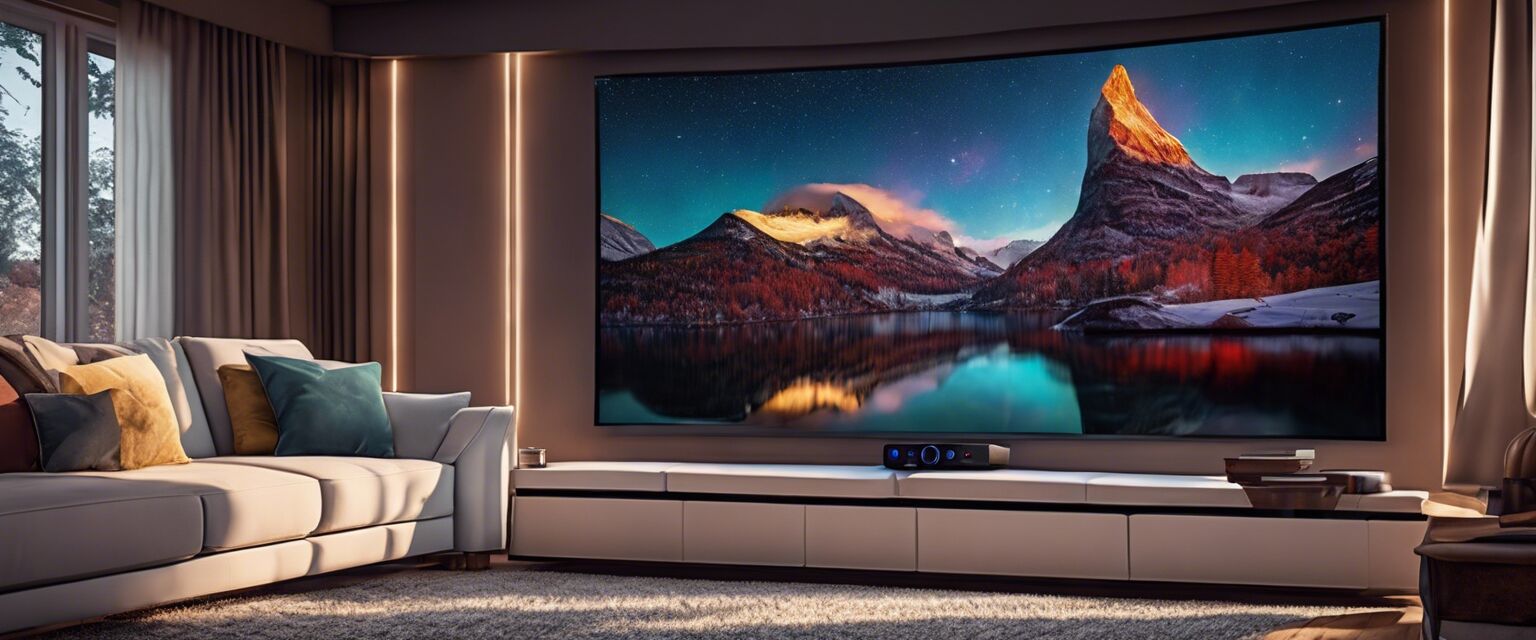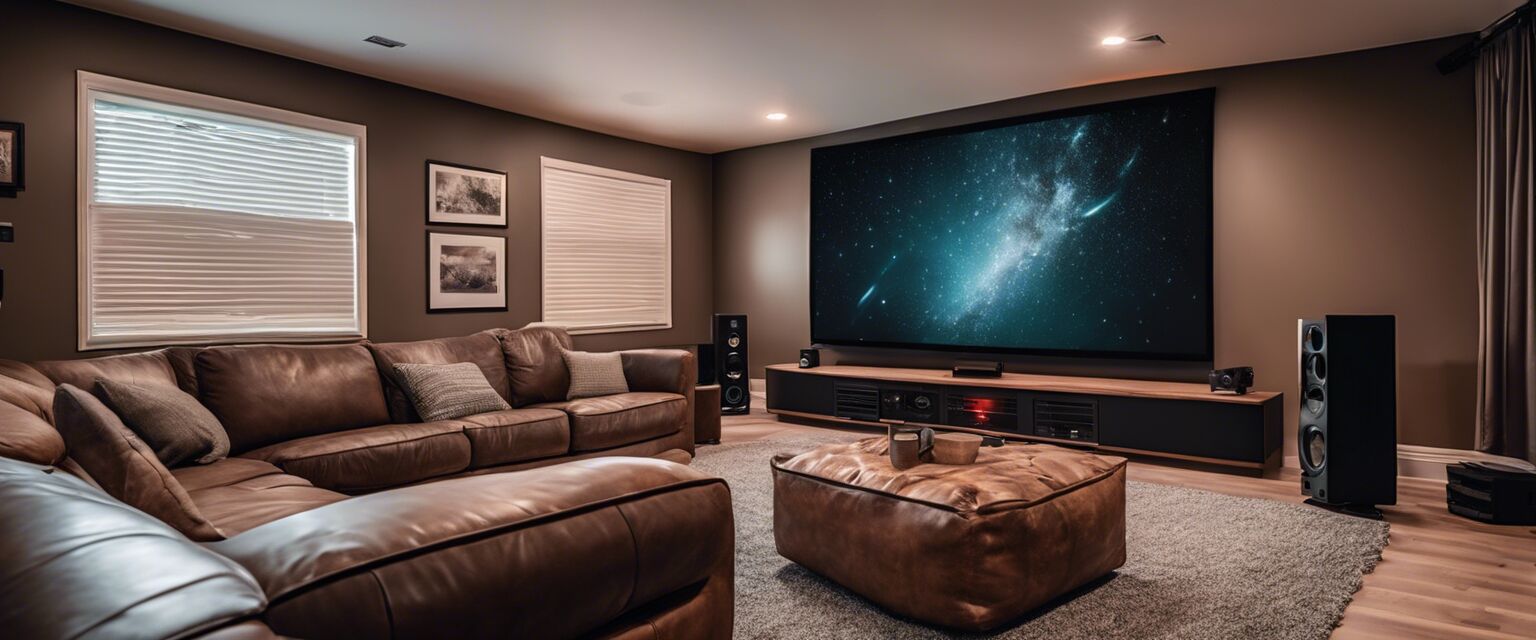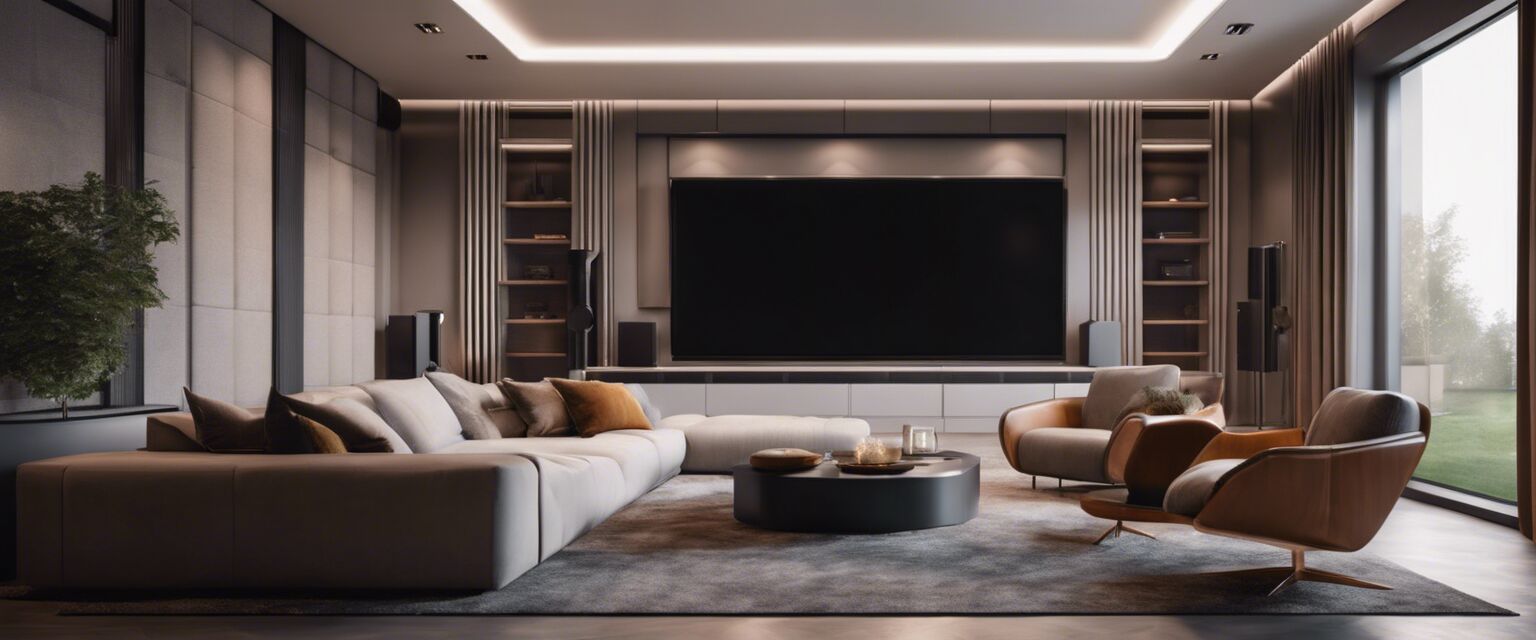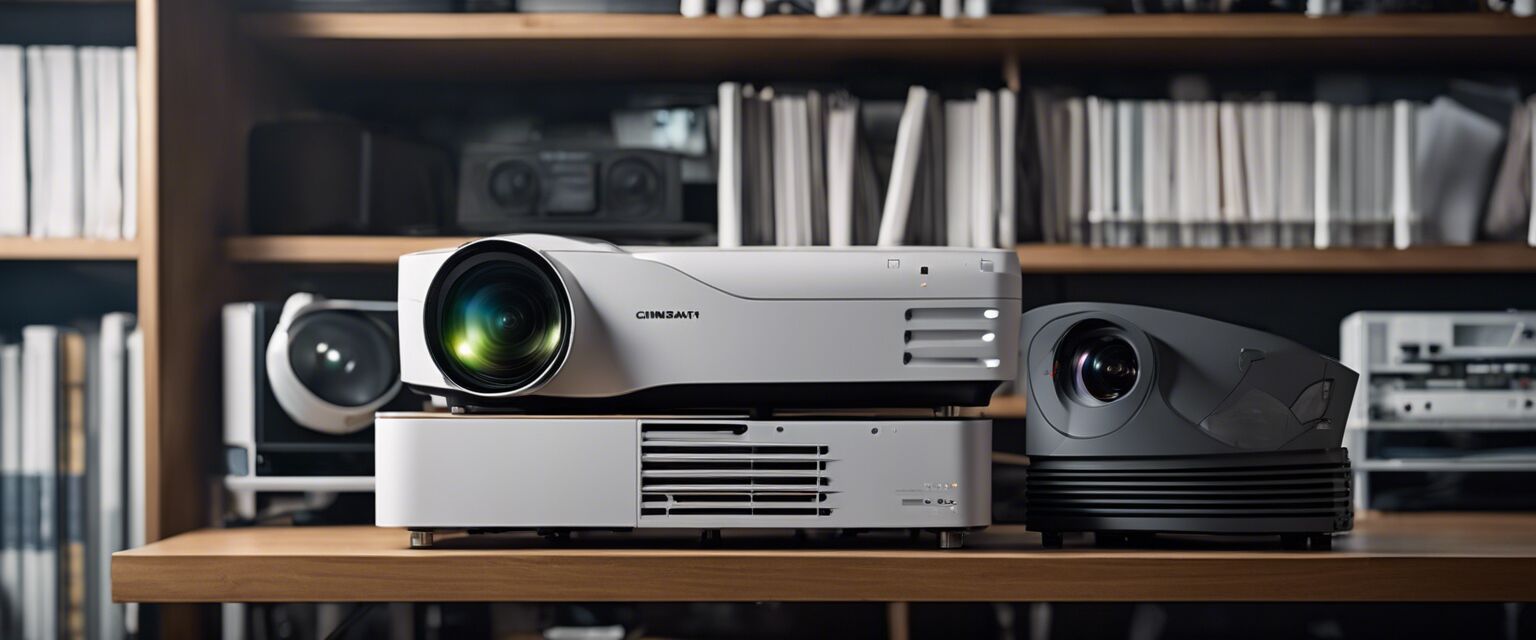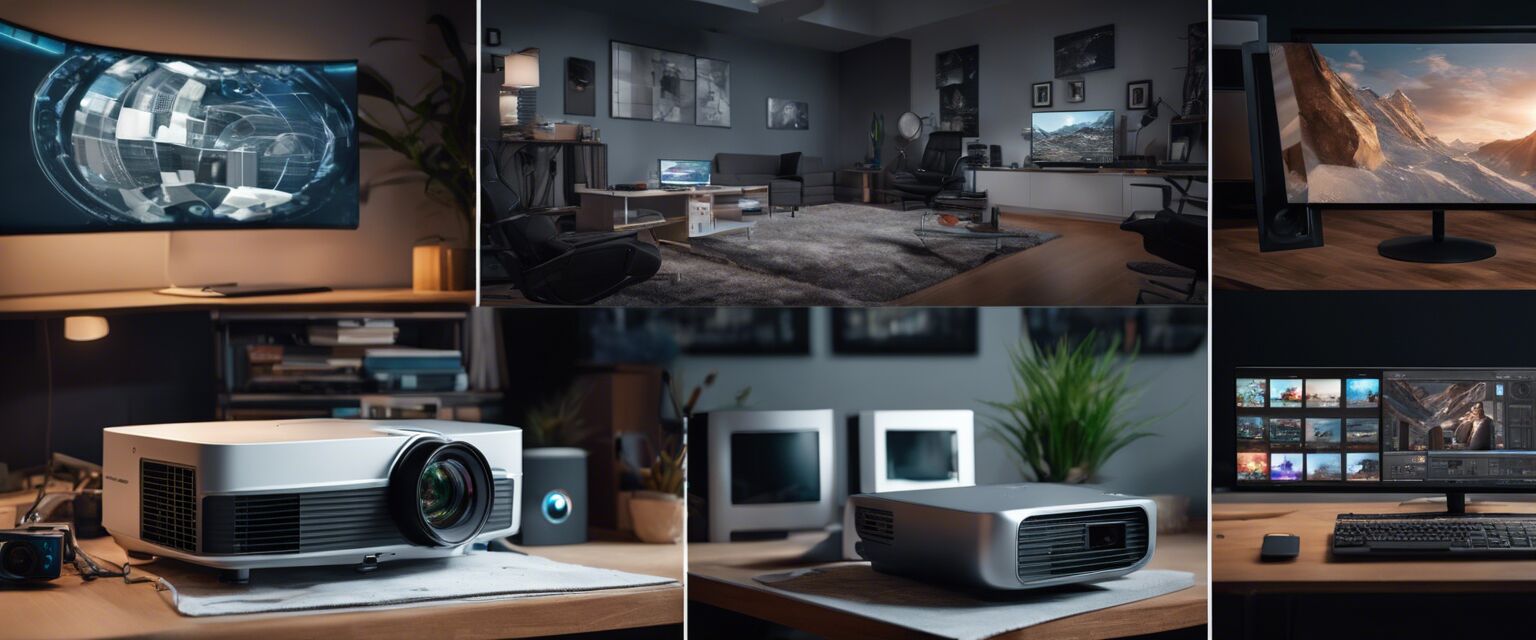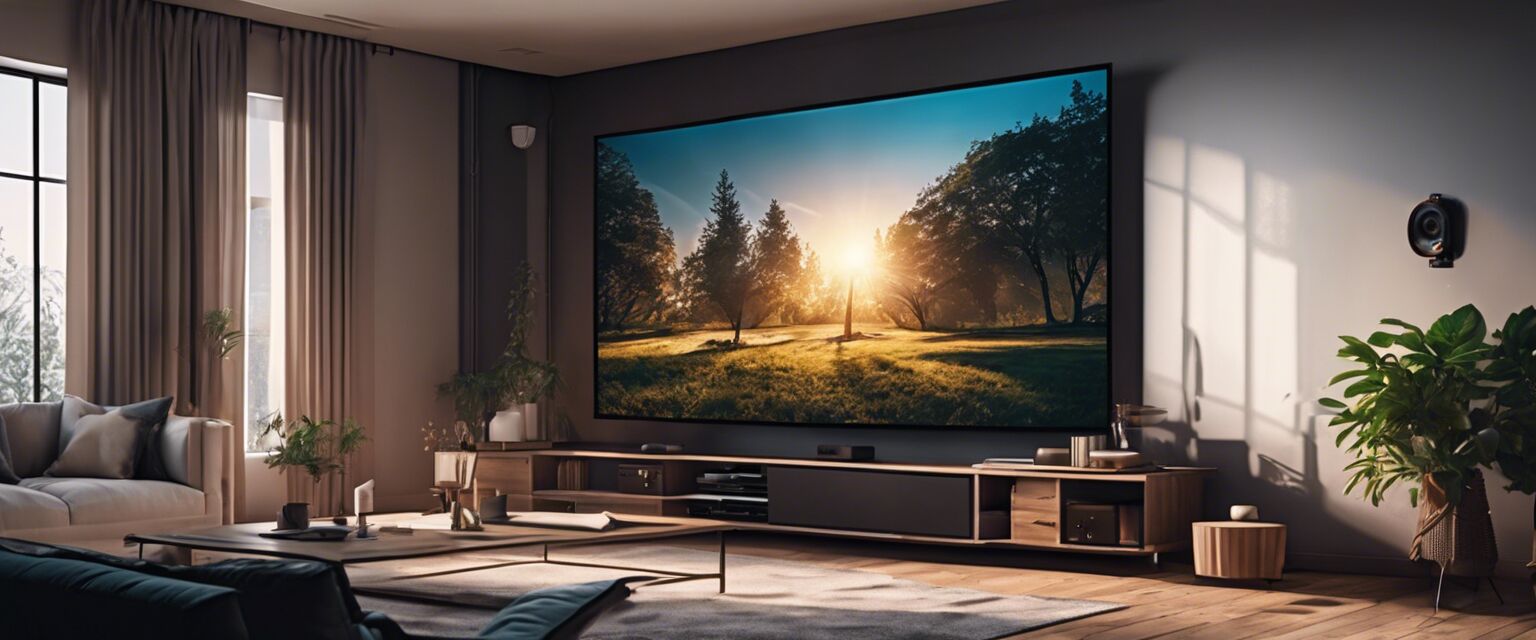
Projector Screen Guide
Key Takeaways
- Projector screens enhance video quality significantly, making them ideal for home theaters and office presentations.
- Understanding different types of projector screens helps in choosing the right one for your needs.
- Screen size, material, and installation method are vital factors to consider.
- Maintenance and care extend the lifespan of your projector screen.
In today's tech-savvy world, video projectors have become a popular choice for home theaters, offices, and outdoor events. However, the efficiency of a projector largely depends on the screen used for displaying the visuals. This guide will explore the various types of projector screens available, their benefits, and tips on how to choose the right one for your needs.
Types of projector screens
There are several types of projector screens, each designed to cater to different environments and use cases. Hereâs a breakdown of the main types:
| Screen Type | Description | Best For |
|---|---|---|
| Fixed Frame Screens | These are permanently installed and offer a taut display surface for optimal image quality. | Home theaters |
| Pull-Down Screens | These screens can be manually pulled down when needed, making them versatile and easy to use. | Classrooms, offices |
| Portable Screens | Lightweight and foldable screens that can be transported easily, suitable for on-the-go presentations. | Outdoor events, travel |
| Electric Screens | These can be rolled up and down automatically via remote control, offering convenience. | Home theaters, conference rooms |
| Wall-Mounted Screens | Affixed directly to the wall, providing a seamless solution without requiring a stand. | Small spaces |
Benefits of using a projector screen
Using a dedicated projector screen can significantly enhance your viewing experience. Here are some benefits:
- Improved image quality: Projector screens are designed to reflect light more efficiently than walls, resulting in sharper and brighter images.
- Enhanced color accuracy: High-quality screens are often calibrated to provide better color reproduction, making your visuals more vibrant.
- Reduced ambient light interference: Many screens feature special coatings that minimize the impact of ambient lighting, allowing for better visibility.
- Professional appearance: A projector screen elevates the aesthetics of a space, adding a professional touch, especially in business settings.
Choosing the right projector screen
Selecting the right projector screen involves several considerations:
1. Screen Size
Choosing the correct screen size is essential. Measure the distance from your projector to the screen and use the following table as a guideline:
| Distance from Projector (feet) | Recommended Screen Size (inches) |
|---|---|
| 6-8 | 80-100 |
| 8-12 | 100-120 |
| 12-15 | 120-150 |
2. Screen Material
Different types of materials cater to various environments:
- Matte White: Offers great color reproduction and accuracy; ideal for controlled lighting.
- High Gain: Reflects more light, suitable for well-lit rooms.
- Ultra-Short Throw: Designed specifically for ultra-short throw projectors.
3. Installation Method
This consideration determines how easily you can set up and dismantle your screen:
- Fixed: Best for permanent setups but can be cumbersome to take down.
- Portable: Great for event setups, lightweight and easy to manage.
- Wall-mounted: Fantastic for small spaces and saves floor area.
4. Budget
Projector screens come in a range of prices. Determine your budget prior to shopping to narrow down your choices.
Care and maintenance of projector screens
To extend the lifespan of your projector screen, follow these simple maintenance tips:
- Regular Cleaning: Use a soft cloth to gently clean the screen surface, avoiding harsh chemicals.
- Proper Storage: For portable screens, store them in a protective case to avoid damage.
- Check for Damage: Regularly inspect for any tears or dents and address them immediately to prevent further damage.
Tips for setting up your projector screen
Tips for Beginners
- Choose a location with minimal light interference for the best viewing experience.
- Ensure that your projectorâs brightness is appropriate for the type of screen you select.
- Consider soundproofing the room if you plan on using your projector for movies or presentations.

Conclusion
Understanding the various types of projector screens, their benefits, and how to select the right one for your needs can enhance your viewing experience immensely. Whether for home use or business presentations, a projector screen is an essential component that can significantly improve image quality and overall performance.
Pros
- Enhances image quality and color accuracy
- Adds a professional look to presentations
- Available in various sizes and styles
- Can be portable for easy transport
Cons
- Can be more expensive than projecting onto a wall
- Requires proper installation and setup
- Some materials may be sensitive to damage

For further information on related products, visit our sections on Projector Accessories, Projector Screens, Portable Projectors, Outdoor Projectors, and Home Theater Projectors.

